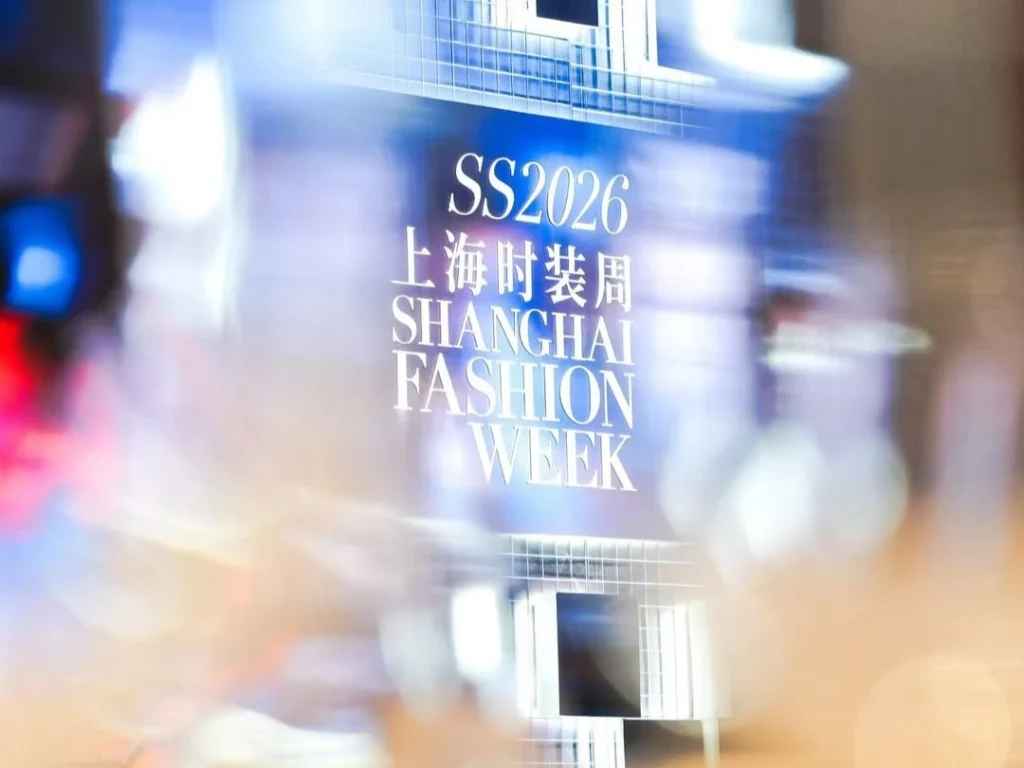Summary
- Discover how China fashion has evolved into a global hub that blends technology and creativity.
- Explore the country’s most important fashion events that connect designers, manufacturers, and digital solutions.
- Want to take your fashion business further? Subscribe to our newsletter for exclusive insights!
China fashion is no longer just about manufacturing. In recent years, it has transformed into a powerful source of creativity, innovation, and digital experimentation.
This transformation didn’t happen overnight. As China’s economy expanded, its creative industries matured and began to attract international attention. Today, the country is home to influential fashion weeks and a new generation of designers.
It’s time to learn how the country became a global leader in innovation and explore what the world can learn from its growth.
Enjoy the read!
Sumário
What is fashion like in China?
Fashion in China is a fascinating blend of past and future. On one hand, the country celebrates thousands of years of heritage through garments inspired by ancient dynasties. On the other, it leads the way in adopting technologies that redefine how to design, produce and sell clothes.
Street style in cities like Shanghai, Beijing, and Chengdu reflects this creative tension. Young consumers are experimenting with bold designs, sustainable materials, and digital fashion. They mix global trends with local identity, turning everyday wear into a statement of individuality.
The presence of traditional clothes remains strong. It shows especially in collections that reinterpret garments such as the qipao and hanfu with contemporary cuts and fabrics.
These pieces serve as bridges between generations, showing how historical symbols can adapt to modern lifestyles. Designers use them as inspiration to express national pride and modern elegance at the same time.
Today, fashion in China is diverse, dynamic, and driven by innovation. It’s a creative field where technology, sustainability, and storytelling meet.
The rise of China as a global fashion powerhouse
Once known primarily for mass production, the country has repositioned itself as a leader in creativity and innovation.
With an expanding middle class and a generation of digital-native consumers, China’s influence now shapes trends internationally.
Design schools, creative incubators, and government initiatives have played major roles in this growth. They’ve fostered a new generation of designers who think globally but act locally. These professionals are helping shift perceptions of “Made in China” from low-cost production to high-quality, original design.
At the same time, international brands have recognized China’s importance as both a market and a creative hub.
Major fashion houses now collaborate with Chinese designers and showcase collections that appeal to the local audience’s sophistication.
Read more: How does China industrial production impact fashion?
What are the main fashion weeks and events in China?

Shanghai Fashion Week
Shanghai Fashion Week is the country’s most internationally recognized fashion event. It brings together designers from all over the world to showcase collections that blend luxury, streetwear, and sustainability.
The event reflects the pulse of a city that thrives on creativity and experimentation. A place where digital fashion shows and virtual runways have become part of the norm.
What makes Shanghai Fashion Week stand out is its celebration of Chinese style in a global context.
Beijing Fashion Week
The event embodies the intellectual and cultural side of China’s fashion scene. Held in the nation’s capital, it focuses on creativity, craftsmanship, and the connection between art and design.
Many local brands use the event to present collections that highlight sustainability and traditional techniques reimagined for modern life. From historical references in patterns and silhouettes to collaborations with local artisans, Beijing Fashion Week bridges heritage with contemporary design.
Intertextile Shanghai Apparel Fabrics
This is one of the largest textile trade fairs in the world. It gathers manufacturers, designers, and buyers to explore the newest materials, technologies, and trends in apparel production.
The event plays a crucial role in connecting China’s vast manufacturing network with international fashion markets.
Beyond showcasing fabrics, the fair emphasizes sustainability and innovation. Exhibitors present eco-friendly materials, smart textiles, and digital tools that support efficient production.
Canton Fair
The Canton Fair, held in Guangzhou, is one of China’s oldest and most comprehensive trade events. It covers multiple industries, but its fashion and textile sections stand out for their scale and diversity.
Brands and buyers from across the globe attend to discover new products, partnerships, and emerging trends in fashion manufacturing.
Read more: Why is crowdsourcing the future of fashion innovation?
CHIC (China International Fashion Fair)
CHIC is China’s largest and most influential fashion trade show. It brings together designers, retailers, and technology companies to present the latest in fashion innovation.
The event provides a complete view of the Chinese market, from creative design to industrial production.
More than just a showcase, CHIC functions as a platform for collaboration and trend forecasting. It highlights how technology and creativity intersect in China’s fashion ecosystem.
Want simple ways to bring technology into your creation process? Discover how 3D design can make your workflow smoother. Get your free e-book now!
What sets the Chinese fashion market apart from other Asian countries?
Unlike other Asian countries that focus mainly on either craftsmanship or mass production, China has successfully combined both.
It manages to offer high-volume manufacturing while also supporting a thriving community of independent designers who prioritize creativity and innovation.
Another unique feature is how the country has embraced digitalization at every stage. Social media platforms like WeChat and Xiaohongshu have become key channels for marketing and e-commerce. They are turning fashion consumption into an interactive experience.
This digital-first mindset allows Chinese brands to react quickly to trends and deliver products at unmatched speed.
At the same time, Chinese culture deeply influences the nation’s fashion identity. Many designers reinterpret traditional symbols, philosophies, and artistic techniques in a modern context.
This cultural authenticity, combined with advanced technology, gives China a distinctive edge in creating fashion.
Read more: How does the Asia Pacific market impact fashion?
How does China use technology in fashion production?
Technology plays a central role in the evolution of China’s fashion industry. Many processes have been optimized in recent years to reduce waste and accelerate production.
Smart factories are now common in China’s textile hubs, using AI and IoT systems to track production in real time.
This integration allows for greater control over quality and faster decision-making. As a result, brands can move from concept to market in a fraction of the time compared to traditional methods.
China’s technology-driven approach also extends to design and retail.
Virtual fitting rooms, AR shopping experiences, and digital fashion shows are reshaping how consumers interact with clothing.
This seamless connection between creativity and innovation shows how technology helps the country maintain its position as a leader.
Read more: Smart uses of clean technology in clothing manufacturing
What can other countries learn from China’s fashion model?

Integration between design, production, and logistics
One of China’s greatest strengths lies in its seamless integration of design, production, and logistics.
Unlike in many other markets, these stages are often close to each other, allowing for faster communication and execution.
Factories, design studios, and logistics centers operate within unified systems that share data in real time. Designers can instantly update technical details, and manufacturers can adjust production accordingly.
This efficiency allows for quick responses to demand changes and trend shifts.
Read more: Dive into Japan fashion history, style and top designers
Investment in innovation and delivery speed
By linking innovation with logistics, China has turned speed into a competitive advantage. Its brands can test, produce, and distribute new collections faster than ever before.
The government and private sector both support initiatives that develop new fabrics, automation systems, and digital tools. This consistent effort has helped local brands compete with global leaders on creativity and performance.
Delivery speed is another area where China excels. Advanced logistics networks, combined with AI-powered demand forecasting, ensure that products reach stores or customers in record time.
How can digitalization accelerate collection development?
With solutions like 3D modeling and virtual sampling, designers can test ideas instantly, without wasting materials or time.
Collaboration between teams has also become smoother thanks to cloud-based platforms. Designers, pattern makers, and manufacturers can work together remotely. This eliminates delays and ensures that each stage of production aligns perfectly with the initial vision.
Ultimately, digitalization shortens the entire development cycle. From concept to finished product, every step becomes faster, more transparent, and more sustainable.
China’s experience proves that embracing digital tools is key to staying competitive in the fast-paced fashion industry.
Read more: 6 benefits of having an online collection management
Boost your company’s production with Audaces technology
Count on the fashion technology leader to provide the most advanced solutions for your business.
Audaces360
Audaces360 integrates cutting-edge digital innovations to optimize workflows in the textile and apparel industry.
It caters to companies of all sizes and types, offering the flexibility to scale with your business needs.
All solutions were carefully developed to address the specific challenges of the field. They streamline the design and production processes, saving valuable time and resources.
The platform boasts a comprehensive range of functionalities, including pattern making, marking, collection management, vector drawing, and 3D creation.
In addition, a fashion Artificial Intelligence to assist you along the way.
Audaces Cutting Room
By embracing cutting-edge technology, garment manufacturers can achieve significant improvements in the production process. From greater design flexibility to enhanced efficiency and reduced costs.
This is where Audaces Cutting Room steps in. Our experts will thoroughly assess your company’s needs and create a comprehensive report.
Then, our team will develop a personalized project to achieve your goals and unlock your company’s full potential.
Rely on Audaces’ cutting-edge machinery to automate your production process. Achieve impeccable cuts on curves and details, speeding up your deliveries and minimizing fabric waste through automation.
Loved this article? Add our website to Google’s Top Store and stay connected with the latest in fashion tech!
FAQ
Shanghai and Beijing Fashion Weeks, Intertextile Shanghai Apparel Fabrics, Canton Fair, and CHIC (China International Fashion Fair).
Unlike other Asian countries that focus mainly on either craftsmanship or mass production, China has successfully combined both.
Smart factories are now common in China’s textile hubs, using AI and IoT systems to track production in real time.










